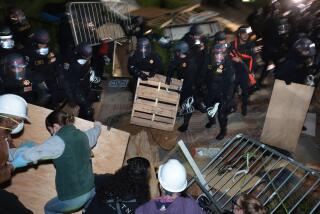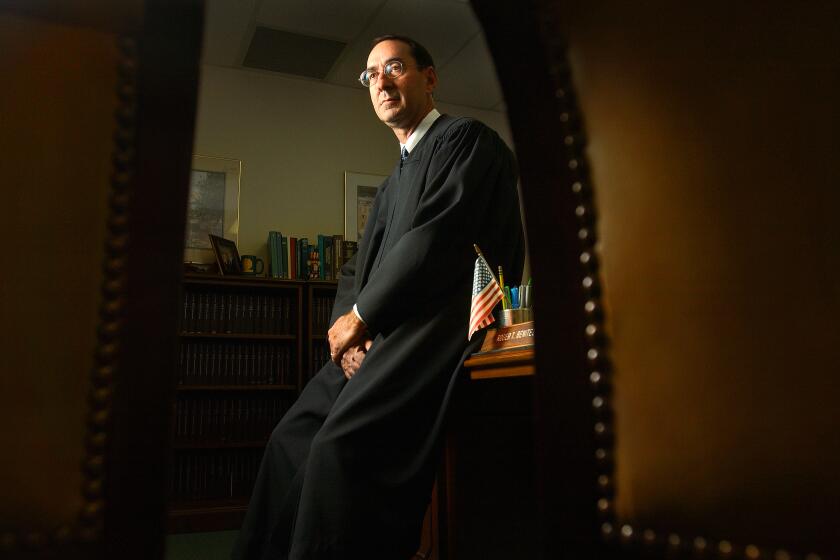U.S. Law Used to Make Slumlord Pay $2.1 Million
A federal judge has ordered convicted slumlord Nathaniel Wells to pay $2.1 million in damages to two former tenants in what is believed to be the first successful use of federal racketeering laws against a ghetto landlord.
The judgment, announced Wednesday by the Legal Aid Foundation of Los Angeles, was also awarded against two of Wells’ family members, Jerry Gray and Stella Gray, and his attorney, James Grinnell.
U.S. District Judge John G. Davies ordered Wells, one of Los Angeles’ most notorious slumlords, and his co-defendants to pay treble damages under federal racketeering laws after all but Grinnell failed to respond to the lawsuit.
Wells, who has in the past eluded more than 40 court judgments against him, could not be reached for comment.
Legal Aid lawyers said the judgment signals the availability of a new arena for tenants in the federal courts to seek redress against slumlords.
“This is important because this is the first time in the nation that we’re aware of that this kind of case has been used in this setting,” said Paul E. Lee, senior counsel for the Legal Aid Foundation.
“It sends a hell of a message to slumlords in this city that if you do enough of this stuff, not maintaining your buildings over a period of time, you’re going to be considered a racketeering enterprise, and you’re going to see these types of judgments.”
The federal Racketeer Influenced and Corrupt Organizations Act was originally designed as a tool to prosecute organized crime figures. In recent years, it has increasingly been used in civil litigation because of its provision for treble damages.
Lee said its use against a slumlord “we feel is much more closer to the original intent. The character of these acts is actually gangsterism, racketeering-type activity.”
In their lawsuit, tenants Carol Craig and Agnes Fowler alleged that Wells’ Los Angeles rental empire was a racketeering enterprise through which he and his co-defendants had engaged in a variety of illegal acts.
In depositions taken as part of the lawsuit, Lee said, Wells’ employees admitted that they kept crews of workers on standby, who would be called out in the event a tenant was behind on his rent or began complaining about housing conditions. As soon as the tenant left the apartment, Lee said, the crews would arrive in a truck, clear out all the tenant’s belongings and sell them at a second-hand store.
‘Completely Cleaned Out’
“We had one witness who would testify when he came back from work, they had even taken the toothpaste and the toothbrushes out of the medicine cabinet, the place was completely cleaned out,” Lee said.
The lawyer said the plaintiffs had also gathered evidence that Wells collected rental deposits, occasionally even monthly rent, from tenants on abandoned or condemned buildings he never even owned.
Wells was convicted in 1982 of 22 Health and Building Code violations, ranging from rodent infestation to unsafe wiring, on several of 60 properties he reportedly owned throughout Los Angeles and was sentenced to four years in jail.
But Legal Aid lawyers said the Grays continued doing business on his behalf, and now that Wells is out of jail, he is back in business.
“He’s been unstoppable. They thought putting him in jail would stop him, but we now have evidence that was developed as late as a couple months ago,” Lee said.
Wells in the past has hidden the extent of his property ownership through a maze of aliases. But Lee said Legal Aid lawyers have traced as many as 12 income-producing buildings now owned by Wells from which they can attempt to begin collecting on the $2.1-million judgment.
More to Read
Start your day right
Sign up for Essential California for news, features and recommendations from the L.A. Times and beyond in your inbox six days a week.
You may occasionally receive promotional content from the Los Angeles Times.






